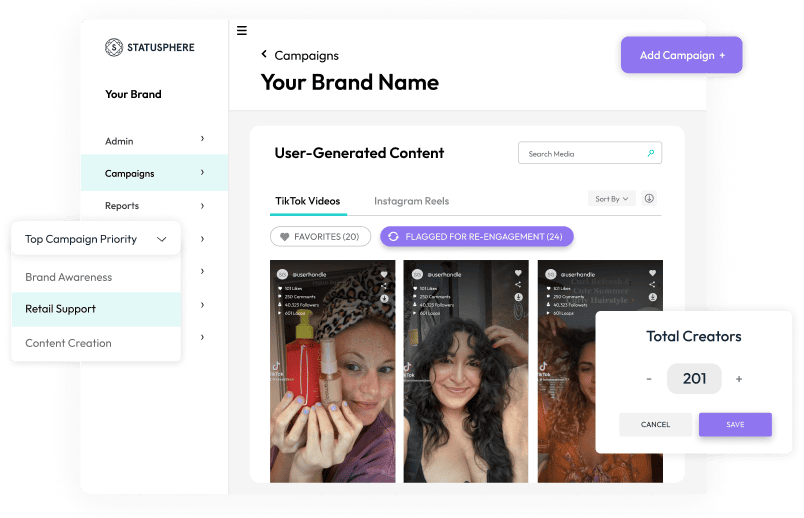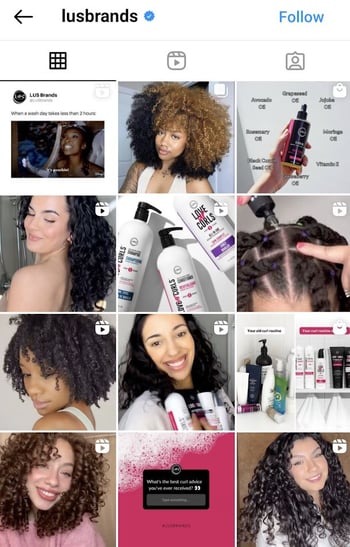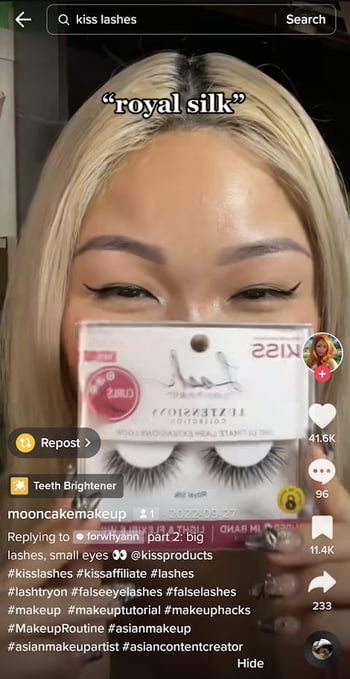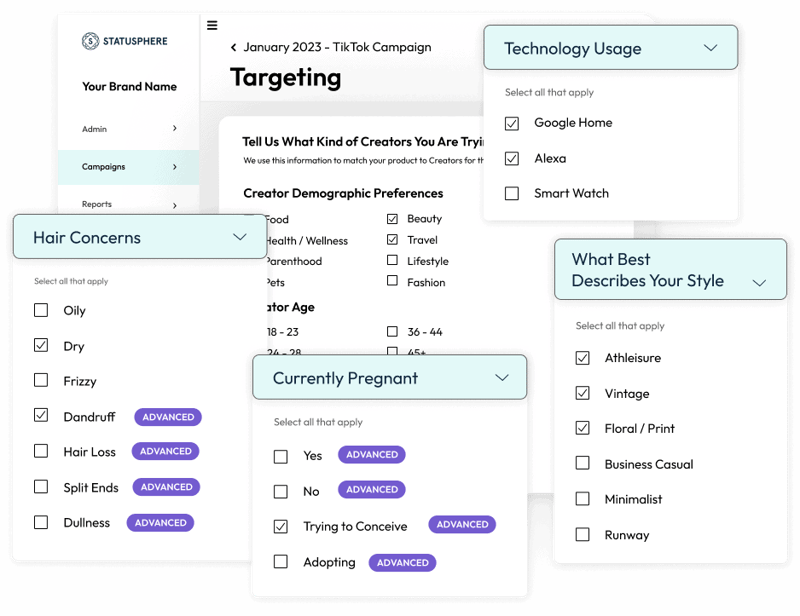 Brands are scrambling to earn more UGC from customers and content creators alike.
Brands are scrambling to earn more UGC from customers and content creators alike.
Because seeing is believing for shoppers today. Fact: 62% of consumers are likelier to buy something when they can see photos and videos of real people using it.
Consider how modern shoppers browse so many sites and social feeds before making a purchase. Engaging with user-generated content during their research reassures them that your brand is legit.
This reinforces the value of UGC in your marketing funnel. Videos, photos and reviews alike.
Many brands are turning to dedicated UGC platforms to collect customer content versus doing everything in-house. This makes sense given how time-consuming gathering UGC can be.
Below we explain what these user-generated content tools do and tips for brands browsing them.
What is a UGC Platform, Anyway?
Let’s kick things off with a UGC platform definition we can work with:
UGC platforms are software tools that streamline the sourcing of user-generated content.
These platforms gather posts related to your brand on social media. This includes videos featuring your product or @tagging your brand.
Some platforms solely identify and source content while other tools assist in generating new UGC. Features vary between tools. That said, most UGC software assists brands with:
- Content collection. This includes detecting, sourcing and aggregating social posts. For example, UGC platforms track your brand’s @tagged content on TikTok and Instagram. Consolidating these posts into a single platform is a huge time-saver for brands. No need to chase URLs or save posts manually.
- Content creation. Maybe your brand is newer to social or doesn’t much have organic user-generated content in the wild. Some platforms can organize collaborations UGC creators or influencers to help you earn more. Your level of involvement in these collabs can vary. Some platforms require more of your time. Others will run your campaigns for you from A to Z.
- Reporting and analytics. Some apps can actually measure the performance of your brand’s user-generated content. This includes engagement rate, comments, shares and more.
- Content rights management. This is crucial for incorporating UGC into your ads or paid promotions. Asking for permission to repurpose a post is a massive time-sink. This is especially true if you frequently publish or repost customer content. User-generated content tools (like Statusphere!) have content rights built in which saves our brands dozens of hours per month.
- User-generated content review and approval. Let’s say you have specific creative requirements for user-generated or influencer-generated content. Some platforms offer quality control so your posts are on-brand and promo-ready. Depending on the platform you choose, you may have to take the time to review your own content. On the flip side, a platform might review posts on your behalf based on the requirements you’ve outlined.
3 Popular Types of UGC Software (and Who They’re For)
Defining what a user-generated content platform does isn’t exactly one-size-fits-all.
To get more granular, here are the most common types of UGC platforms used today:
1. Content Aggregators
UGC aggregators source user-generated content from hashtags and @mentions across social media. These platforms are ideal for brands that already earn a lot of UGC from their customers. Some aggregators can also collect non-social content directly from customers. For example, a UGC platform might let customers upload photos to a product page or review.
2. Self-Service UGC Platforms
Self-service platforms offer a way for brands to find creators to post on their behalf. These platforms are ideal for brands that have time to manage campaigns in-house and are running one-off promotions with specific creators. Much like any database software, making the most of these platforms means knowing what you want. This includes which creators to target and instructions to provide them.
Keep in mind: some social media networks are cracking down on unauthorized data scraping, which can make influencer search tools in some self-service platforms completely defunct. Do your research before going in!
3. Scalable UGC Platforms
Scalable UGC platforms effectively match brands with relevant influencers and creators (no search tools required). These platforms streamlined the process of generating new content for brands while also aggregating and analyzing those posts. Scalable platforms (like Statusphere!) are ideal for brands that need influencer-generated or user-generated content ASAP but don’t have the time or resources to gather it themselves.

UGC Platforms vs. Influencer Platforms
Honestly, the distinction between influencer and UGC platforms can be vague.
In some cases, they’re one and the same. Both types of apps can share features like aggregating social content and analyzing its performance. The key differences?
- Influencer platforms can help brands create new content. Many UGC platforms primarily focus on sourcing what’s already been posted.
- For both types of platforms, you might be working with an in-house content creator network. This includes UGC creators and influencers alike.
- With UGC creators, you’re effectively hiring someone to make promotional content that looks like UGC. They may not publish that content to their social feeds. On the flip side, influencers post branded content to their own feeds for their followers to see. Authenticity and reach are factors to consider.
Either way, both types of platforms can produce the same result: authentic content featuring your products in action.
Why Are Brands Investing in UGC Platforms?
Fair question! Brands are leveling up their marketing stacks to customer-created content at scale. Below is a breakdown of why a dedicated UGC platform is valuable for brands.
Growing Brands Need Authentic Content at Scale
Let’s say you’re not earning as much UGC as you'd like.
Or maybe you need a high volume of customer content ahead of a launch or promotion.
UGC platforms offer brands a scalable way to generate a library of on-brand content without having to play the waiting game.
Given that buyers are 2.4x more likely to see consumer content as authentic versus branded content, the value of real people posting about products can’t be overstated.
This applies to influencer content and “true” UGC alike. Both types of posts are valuable for brands looking to highlight their base of satisfied customers.
LUS Brands’ Instagram feed illustrates how brands can create an engaging social presence featuring customers and influencers alike.

Source: @lusbrands
Brands should strive to keep their customer content front and center on social media and beyond. Doing so means that new customers can easily imagine your products in their hands. This also highlights the value of running always-on campaigns where your brand earns content consistently.
Many Brands Struggle to Earn On-Brand UGC
Even if you do have people posting about your brand, it doesn’t always mean your UGC is ad-ready.
Bummer, right?
This highlights the value of a platform that ensures that your posts are on-brand. For example, brands that work with influencers benefit from authentic content and the ability to offer creative direction so your posts send the right message.

Source: @mooncakemakeup
Having on-brand content is especially important if you’re interested in whitelisting content on TikTok or running branded content ads on Instagram.
Collecting UGC Manually is Tedious and Time-Consuming
Finding posts. Asking permission to republish. Making sure everything’s on-brand.
The process of getting more user-generated content involves a ton of moving pieces.
All of the above can be exhausting if you’re regularly reposting customer content. Rather than ask for posts one by one (see below), UGC software can streamline the process.

Source: @dee.diary
Again, Statusphere's micro-influencer platform has content rights built in. That means you own every piece of content generated by our network of vetted creators.
Picking the Best UGC Platform for Your Brand
If collecting UGC DIY is too much of a headache, we get it.
UGC platforms make sense for brands that see the value of authentic content but don't have the bandwidth to source and gather it themselves.
Thing is, how do you choose the best UGC software for your specific needs?
We’ve talked at length about what brands need to look for with any given influencer platform. Likewise, picking the best user-generated content tool for your brand depends on your needs.
Our take? Scalability and quality matter are key. Hoping that “good” customer posts roll in on their own isn’t an option for brands in competitive industries. That’s why investing in a platform that guarantees ongoing pieces of high-quality, brand-related content is ideal.
That’s exactly what Statusphere offers. Our micro-influencer platform uses 250 first-party data points to match brands with creators in our network.

Unlike other UGC platforms, our brands get guaranteed, rights-ready content from authentic creators. Our fulfillment technology also ensures that your products get into creators' hands quickly and hassle-free.
Want to learn more about how our platform works? Get in touch with one of our creator campaign experts to see how we can scale your brand's UGC in a fraction of the time.
This article was first published in April 2023. It was last updated June 7, 2023.
/UGC%20Platforms%20Featured%20Photo%20Compressed.jpg)